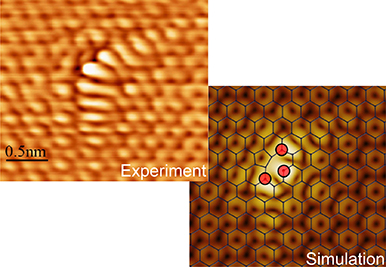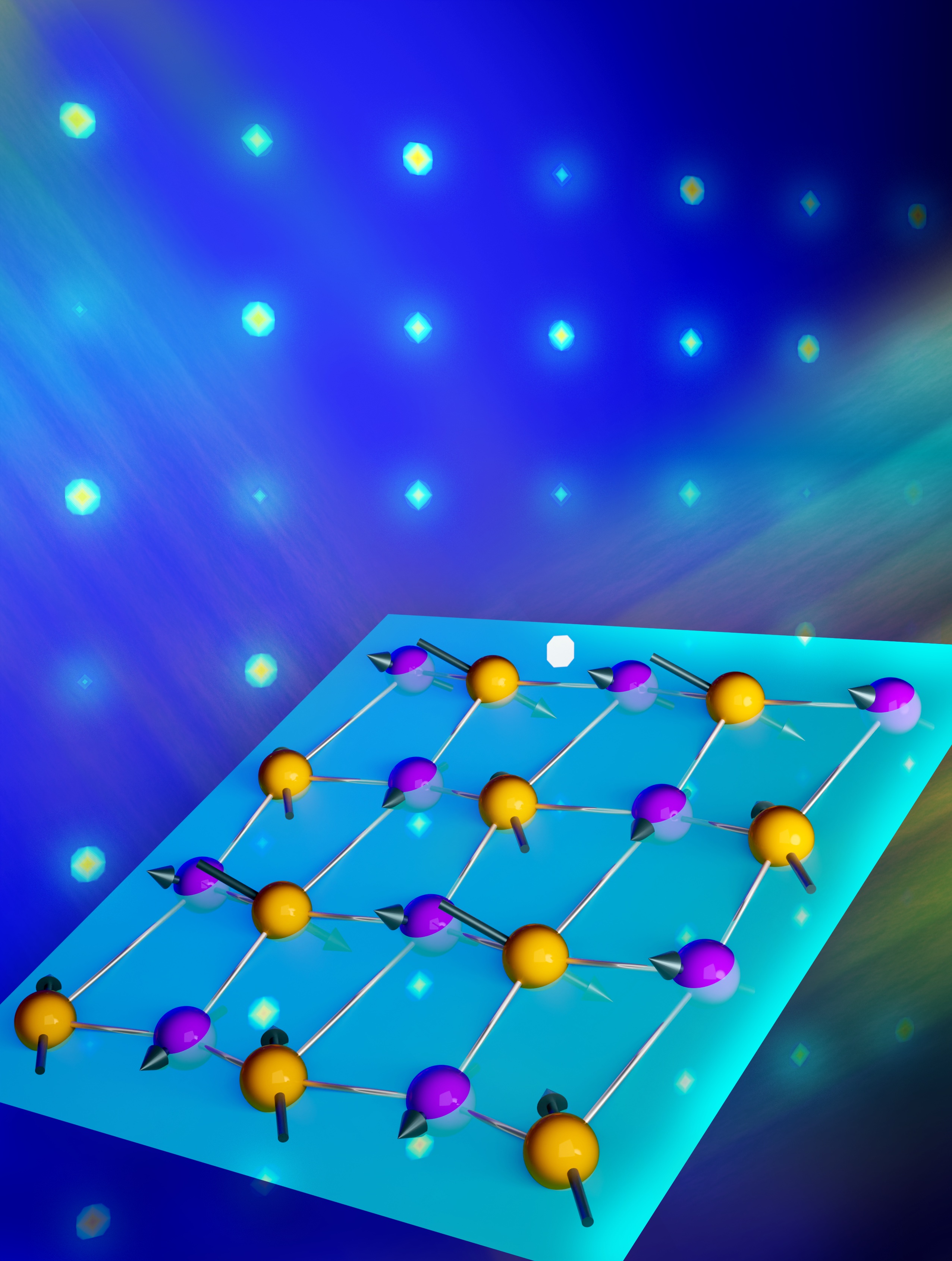Boron Boosts Graphene’s Sensitivity to Noxious Gases
International team shows that modified graphene is 105 times more sensitive at detecting ammonia.

The Science
Detecting noxious gases, such as those released from power plants and other sources that can harm the environment, is something graphene does well, but it could be even better. Researchers discovered a way to significantly improve its performance by peppering high-quality graphene sheets with boron impurities. Compared to pristine graphene, these modified sheets, a.k.a. boron-doped graphene, were 27 times more sensitive at detecting nitrogen dioxide and 105 times more sensitive at detecting ammonia.
The Impact
Ultrasensitive gas detectors based on this proof-of-principle experiment could monitor environmental health and safety. Sheets of doped graphene with useful electronic and magnetic properties could also find application in field-effect transistors, hydrogen storage, and lithium-ion batteries.
Summary
Theory predicts that graphene could be much better at detecting noxious gases if impurities, or dopants, were incorporated into its rigid framework of one-atom-thick carbon. Experimental progress, however, has been limited by a lack of high-quality boron-doped graphene. Here, scientists grew highly ordered, centimeter-wide sheets of boron-doped graphene and observed, for the first time, boomerang-shaped features corresponding to dopant atoms embedded within graphene’s hexagonal matrix. They characterized the material’s electronic properties, which depend on how impurity atoms incorporate into graphene’s honeycomb lattice and create defects that change the way gases chemically interact with graphene, which in turn alters current flow. To discover the atomic-level details of how boron doping changes graphene’s properties, the researchers went to the Center for Nanophase Materials Sciences, a DOE Office of Science User Facility at Oak Ridge National Laboratory, for advanced instrumentation and expertise in low-voltage electron microscopy and scanning tunneling microscopy. Results showed that, compared with pristine graphene, boron doping increases the gas sensing capability of graphene to parts per billion for nitrogen dioxide and parts per million for ammonia.
Contact
Liangbo Liang
Center for Nanophase Materials Sciences, Oak Ridge National Laboratory, Oak Ridge, Tennessee 37831
liangl1@ornl.gov, 865-241-0200
David Cullen
Materials Science and Technology Division, Oak Ridge National Laboratory, Oak Ridge, Tennessee 37831
cullenda@ornl.gov, 865-356-3400
Funding
Funding came from National Natural Science Foundation of China, Program of China Grants, Multidisciplinary University Research Initiative Project Awards, The Pennsylvania State University Center for Nanoscale Science, the Carbon Institute of Science and Technology, Japan Regional Innovation Strategy Program by the Excellence, Japan Science and Technology Agency, the Honda Research Institute USA, Inc., the Royal Society, Graphene Flagship, European Research Council, the National Fund for Scientific Research of Belgium, the Graphene Flagship, and the ARC on Graphene StressTronics, which is sponsored by the Communauté Wallonie-Bruxelles.
Other support came from the Materials Research Institute at The Pennsylvania State University (use of characterization facilities), the Center for Nanophase Materials Sciences, a U.S. Department of Energy User Facility at Oak Ridge National (scanning tunneling microscopy and scanning transmission electron microscope research), and the Consortium des Équipements de Calcul Intensif (computational resources, funded by the National Fund for Scientific Research of Belgium).
Publications
R. Lv et al., “Ultrasensitive gas detection of large-area boron-doped graphene.” Proceedings of the National Academy of Sciences USA 112, 14527(2015). [DOI: 10.1073/pnas.1505993112].
Related Links
https://www.uclouvain.be/529892.html
Highlight Categories
Performer: SC User Facilities , BES User Facilities , CNMS
Additional: Non-DOE Interagency Collaboration , International Collaboration



